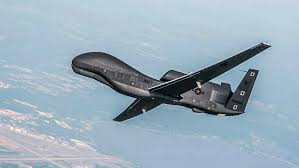Introduction
Combat drones have become a pivotal component of 21st-century military operations. As nations invest in autonomous technologies to enhance their defense capabilities, unmanned aerial vehicles (UAVs) designed for combat purposes are rapidly evolving. These drones are redefining the rules of engagement, enabling remote surveillance, precision strikes, and reduced soldier casualties in hostile environments.
Whether deployed for strategic reconnaissance or armed offensive missions, combat drones offer operational flexibility, scalability, and cost efficiency. As a result, governments, defense contractors, and technology firms are pouring significant resources into research, development, and deployment of these systems.
According to Marketintelo, “The global Combat Drone Market size was valued at approximately USD 9.6 billion in 2024 and is projected to reach USD 24.8 billion by 2032, growing at a compound annual growth rate (CAGR) of 12.6% during the forecast period 2024–2032.”
Read Full Research Study – https://marketintelo.com/report/combat-drone-market
Key Drivers Behind Combat Drone Adoption
A variety of strategic, technological, and geopolitical factors are driving the increasing adoption of combat drones across the globe:
1. Military Modernization Initiatives
Many nations are undergoing rapid military modernization to counter asymmetric threats and improve national security. Combat drones are central to these efforts, offering enhanced situational awareness and precision targeting capabilities.
2. Lower Operational Risks
Unmanned combat drones reduce the need to place soldiers in high-risk zones. This not only decreases potential casualties but also enables continuous mission execution in environments deemed unsafe for manned aircraft.
3. Technological Advancements
Breakthroughs in AI, machine learning, GPS navigation, and satellite communications have significantly improved drone functionality. Today’s combat drones can autonomously identify, track, and neutralize targets with high accuracy.
4. Cost Efficiency
Compared to manned fighter jets, combat drones are relatively cheaper to produce, maintain, and operate. This affordability appeals to both developed and developing nations looking to strengthen their air combat capabilities on a budget.
As per Dataintelo’s analysis, “The regional distribution of the Combat Drone Market reflects varying consumer preferences, market shares, and growth rates. For instance, Europe accounted for approximately 21% of the market share in 2024, generating close to USD 2.0 billion.”
Read Full Research Study – https://dataintelo.com/report/global-combat-drone-market
Major Applications of Combat Drones
Combat drones are employed in a wide range of military missions. Their versatility makes them essential assets in modern warfare.
1. Target Elimination
Armed drones can deliver precision strikes against high-value targets while minimizing collateral damage. Countries like the U.S. have used drones such as the MQ-9 Reaper for targeted assassinations and counter-terrorism missions.
2. Intelligence, Surveillance, and Reconnaissance (ISR)
Unmanned systems offer real-time data collection and battlefield surveillance, giving defense personnel critical insights during combat operations. Long-endurance drones can patrol hostile territories for extended periods without detection.
3. Electronic Warfare
Modern combat drones are being equipped with electronic warfare systems to jam enemy communications and radar systems. This enables disruption of adversarial command-and-control networks.
4. Border Security
Many countries are using drones to monitor border activity and prevent illegal incursions, especially in regions with difficult terrain or high levels of cross-border tension.
Leading Countries and Defense Programs
Several countries are leading the charge in combat drone development and deployment:
United States
The U.S. continues to dominate the combat drone sector, with platforms like the MQ-1 Predator and MQ-9 Reaper being integral to its military operations. U.S. defense contractors such as General Atomics and Northrop Grumman are continually innovating UAV systems.
China
China has rapidly scaled its drone programs, manufacturing combat UAVs like the Wing Loong and CH series. These drones are not only used domestically but are also widely exported to allied nations across Asia, Africa, and the Middle East.
Turkey
Turkey has emerged as a significant drone power, thanks to the success of Bayraktar TB2 and Akıncı drones developed by Baykar. Turkish drones have seen action in Syria, Libya, and Ukraine, garnering international attention.
Israel
Israel is a major exporter of combat UAVs and has developed advanced platforms such as the Heron TP and Harop. The country’s emphasis on defense R&D has fueled continuous innovation in drone capabilities.
Technological Trends in Combat Drone Development
Innovations shaping the future of combat drones include:
1. AI-Powered Autonomy
Modern combat drones increasingly rely on AI to make real-time decisions, from target acquisition to navigation and threat detection. Fully autonomous drones that can operate without human intervention are in active development.
2. Swarm Technology
Swarming involves deploying multiple drones to act in a coordinated manner, often overwhelming enemy defenses. This concept is gaining traction among military planners and defense contractors worldwide.
3. Stealth and Counter-Stealth Capabilities
To evade advanced air defense systems, manufacturers are equipping drones with radar-absorbing materials and stealth-enhanced designs. Some drones can also detect and respond to enemy jamming attempts or cyber intrusions.
4. Modular Payload Systems
Combat drones are now being designed with interchangeable payloads, enabling easy reconfiguration for different mission profiles—be it attack, ISR, or electronic warfare.
Regional Insights and Future Outlook
The global landscape of the combat drone sector reflects dynamic geopolitical alignments and varying levels of technological advancement.
North America
Driven by heavy defense spending and a mature aerospace sector, North America holds a significant share of the market. The U.S. government continues to fund drone R&D programs through agencies like DARPA and the DoD.
Asia-Pacific
The Asia-Pacific region is experiencing rapid adoption due to border disputes, rising defense budgets, and growing indigenous manufacturing capabilities in countries like China, India, and South Korea.
Middle East and Africa
Persistent regional conflicts and the need for surveillance over vast, remote territories are accelerating drone usage in the Middle East. Israel, UAE, and Saudi Arabia are key players in both procurement and deployment.
Europe
With growing concerns over regional security and NATO obligations, European countries are increasing investment in UAV systems. Germany, France, and the UK are leading collaborative drone programs to strengthen shared defense capabilities.
Ethical and Regulatory Considerations
The expanding use of combat drones raises ethical questions and legal challenges. Civilian casualties, autonomous decision-making in lethal operations, and drone usage in sovereign airspace are all subjects of international debate.
Regulatory frameworks must evolve to balance military necessity with humanitarian considerations. There is a growing call for international treaties to govern the use of autonomous weapons and prevent misuse in conflict zones.
Conclusion
Combat drones are reshaping the global defense landscape, offering powerful tools for surveillance, strategic strikes, and border security. Backed by rapid technological advancements and expanding military applications, these unmanned systems are becoming indispensable assets for modern armed forces.
As geopolitical tensions persist and warfare evolves, the importance of drones in shaping future battlefields will only intensify. Governments, developers, and regulatory bodies must work in tandem to ensure these powerful systems are deployed responsibly and effectively.



